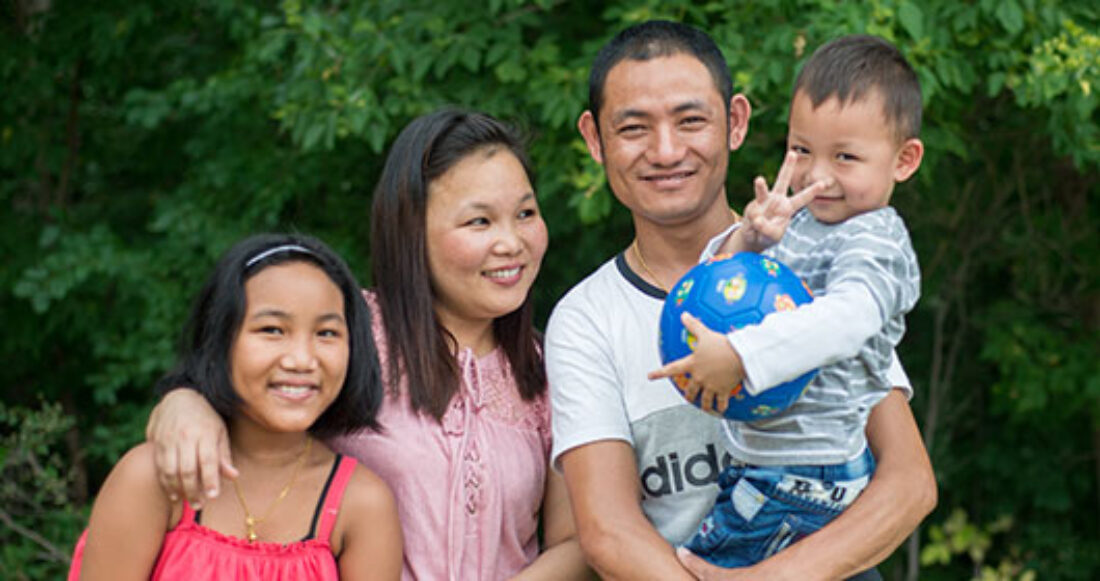New Report Shows Racial Barriers Prevent Children of Color and Immigrant Children from Reaching Potential, Postrecession

The Annie E. Casey Foundation’s 2017 Race for Results report shows that persistent challenges in opportunities for success and well-being after the recession hinder children of color and kids living in immigrant families, especially African-American, Latino and American Indian kids.
Race for Results, released today, underscores the formidable risks to healthy child development such as poverty, limited educational opportunities and family separation, in immigrant families and for children of color, exacerbated by policies that limit resources and restrict access. The report comes at a time when the nation’s lawmakers consider policy changes that will affect the 800,000 young people who have been granted a reprieve from fear of deportation through the Deferred Action for Childhood Arrivals (DACA) program.
Read, download or order Race for Results
The report reveals the reach of chronic poverty: children of immigrants account for 30% of all low-income kids in the United States, but represent less than one-fourth of the nation’s overall child population.
“The nation’s vitality and prosperity depend on the success of every child in this country,” said Casey Foundation President and CEO Patrick McCarthy. “Like generations before them, immigrants have helped further the nation and its economy. We will lose a great deal if policymakers don’t expand existing policies that work and implement new legislation to support children in immigrant families, as well as millions of U.S.-born children of color.”
Race for Results measures children’s progress on the national and state levels in key education, health and economic milestones by racial and ethnic groups. The report’s index uses a composite score of indicators on a scale of 1 (lowest) to 1,000 (highest) for comparison. The index shows persistent, significant disparities among African-American (369), American Indian (413) and Latino children (429) compared to white (713) and Asian and Pacific Islander children (783).
Race for Results lays bare that despite some progress, a gulf in prosperity continues to impact children living in immigrant families, many of whom are children of color:
- Eighteen million youth are children of immigrants or immigrants themselves. Of those, 88% are U.S. citizens and 84% are children of color.
- Median income for immigrant families with kids is 20% less than for U.S.-born families.
- One in four children in immigrant families lives below the federal poverty line. That’s 4.5 million kids.
- Administrative decisions threaten the status of 800,000 young people currently in the United States under the DACA program, more than 90% of whom are employed or enrolled in school.
Despite these barriers, children in immigrant families continue to strive for a better life:
- Eight in 10 children in immigrant families (80%) live in two-parent households compared to 65% of children in U.S.-born families.
- Eighty-five percent of foreign-born young adults are in school or working — slightly higher than the proportion of U.S.-born young adults who are doing so (84%).
- Young children in immigrant families are enrolled in early-childhood education programs at nearly the same rate (59%) as their U.S.-born peers (60%).
“The data make it clear: for children of color, a person’s race is a leading barrier to success in the United States,” said Nonet Sykes, the Casey Foundation’s director of racial and ethnic equity and inclusion. “With children of immigrants and immigrant children comprising such a significant portion of the youth population, and our future workforce, it is critically urgent that we ensure they grow up with access to the support and resources needed to thrive.”
For children of color and children in immigrant families, the setbacks are significant and amount to a national crisis:
- In nearly all states, African-American children face some of the greatest barriers to success, especially in the South and the Midwest.
- American Indian children also encounter significant obstacles to success. The 220 index score for American Indian children in South Dakota is the lowest of any group in any state.
- Rhode Island (341) and Pennsylvania (344) showed the lowest index scores for Latino children; kids in the South and Southwest are also challenged.
- Barriers to success vary widely for Asian and Pacific Islander children. In New Jersey, Asian and Pacific Islander children had the highest index score for any group in any state (918); Alaska had the lowest index score for Asian and Pacific Islander kids at 551.
- White children represent 51% of the U.S. child population and have among the highest index scores across the states, especially in the Northeast. States in the South and Southwest are among the lowest-scoring for white children.
The report makes three recommendations to help ensure all children and their families are afforded opportunities to reach their full potential:
- Keep families together and in their communities — Keeping children with their families enables them to meet developmental milestones and for parents to meet their kids’ needs. For many immigrant families, this means ensuring child well-being is prioritized in immigration enforcement decisions.
- Help children meet key developmental milestones — Overall child well-being is key to our nation’s future and is influenced by their environments. We must choose policies that make their communities more supportive and healthy, including ensuring schools are welcoming places for all families and are equipped to support the needs of English language learners.
- Increase economic opportunity for parents — Meaningful programs and policies that improve opportunities for low-income workers, and address the needs of parents and their children, save taxpayers by reducing the costs of safety-net programs. For example, providing paid family leave for employees can help parents, including immigrant parents—who are among the most likely to lack access to leave—to balance work and raising a family.
The Casey Foundation’s ongoing Race for Results series of policy reports and case studies reflects the Foundation’s commitment to examining data and offering data-informed policy recommendations on issues of racial and ethnic equity.





